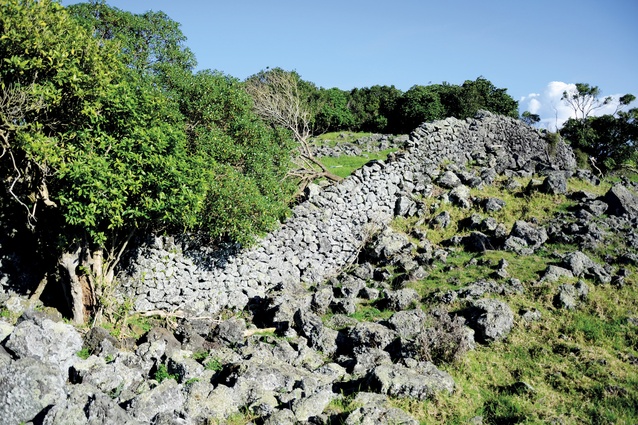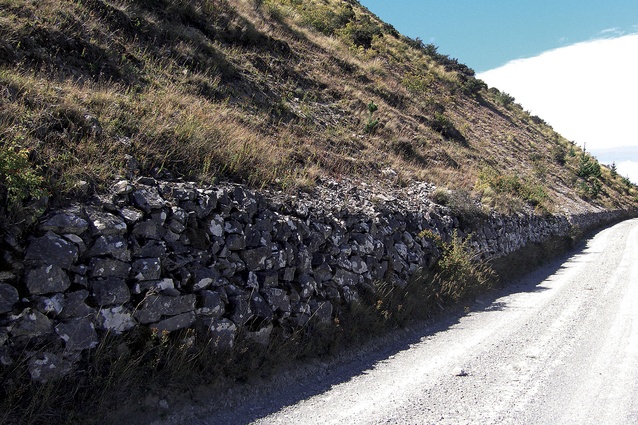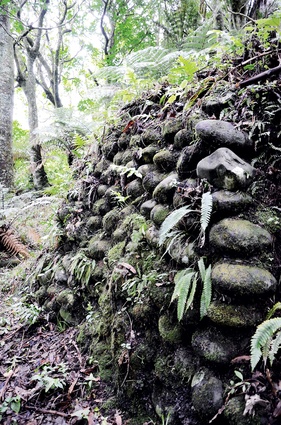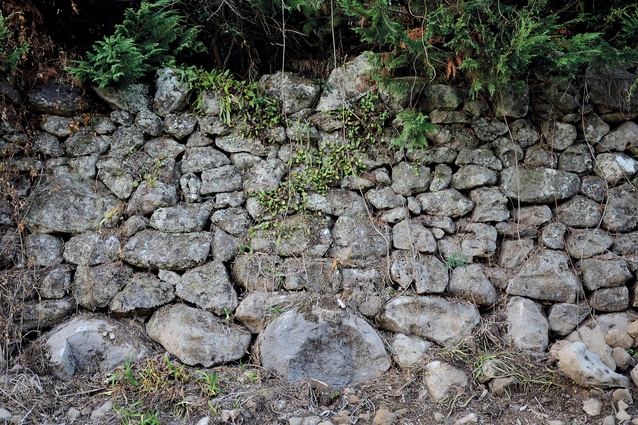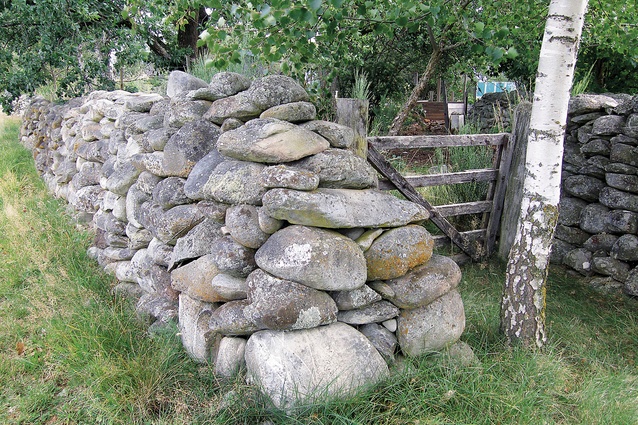Legacy with stone
Although they are not commonly built these days, our landscapes contain a surprising diversity of dry stone walls.
This ancient tradition is a good study in context, for it involves the integration of local materials and the skills that arriving cultures bring with them (or sometimes develop here, as at Te Koru Pa). Quite apart from that, they deserve attention for their resonant beauty.
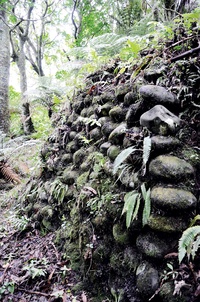
The earliest examples stem from Maori settlements. Relatively crude stone piles were a feature of many Maori gardens, serving the dual role of dividing plots and clearing land for cultivation (performing exactly the same function as clearance walls from the British Isles). However, more sophisticated walls were built in some parts of the country, such as on the Poor Knights Islands and at Te Koru Pa in Taranaki. At the latter site, these take the form of stone revetting which clothes cut embankments between terraces that descend the hill towards the Oakura river. The river is the source of the round stones that face the battered scarps, several of which exceed two metres in height.
Early British settlers imported long-established stone walling traditions with them, erecting considerable lengths of dry stone walls in areas such as the Otago Peninsula, Auckland’s Otuataua Stonefields and the Whangarei district (where Croatian immigrants also made a significant contribution towards Whangarei’s beautiful network of walls). Otuataua is a fascinating, layered landscape, which bears the successive marks of both Maori and European settlement (extending back more than 700 years). All three of these areas share volcanic origins, and their walls certainly served a partial role as clearance walls.
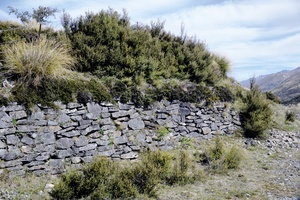
For me, some of the most interesting walls are the lesser-known surprises that one encounters around the country. One example is found on the eastern side of Lake Ohau, where retaining walls (up to 2.5m tall) fringe the roadside, and form an impressive foot to the base of a local mountain, Ben Ohau. Not far from Ohau, local stone is also put to elegant use by the Mt Cook Rd, in a style that bears similarities to schist walls of Central Otago.
Undoubtedly, there exists an abundance of other surprising examples throughout the country (such as the Depression-era walls of Otaki, of which my brother-in-law has shown me images). As part of the myriad of fragments that define our landscape culture, our dry stone walls represent a legacy worth recording – especially for those of us who value the place of context within landscape architecture.
Note: This article is dedicated to the memory of my father, Bill Smith who, in addition to being a wonderful father, built a fine stone wall in his youth – one that played a formative role before this child’s gaze.


